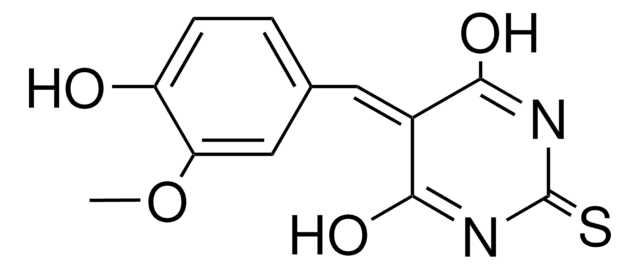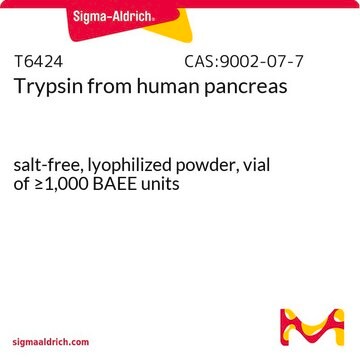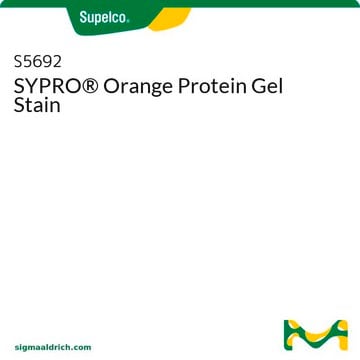PP0100
Trypsin Profile IGD Kit
Synonym(s):
In gel digestion kit, Proteomics grade Trypsin, TPCK treated
About This Item
Recommended Products
usage
kit sufficient for ≤100 applications
storage temp.
2-8°C
Related Categories
General description
Trypsin has been chemically modified through reductive methylation of the ε-amino groups of lysine to reduce autolysis and minimize autolytic fragments. In addition, it has been TPCK (tosyl phenylalanyl chloromethyl ketone) treated to remove residual chymotrypsin activity and then further purified by affinity chromatography, yielding a highly purified trypsin suitable for proteomics work.
application
Features and Benefits
- Faster destaining than with alternative in-gel digest kits
- Includes 100% of the reagents needed to destain, digest, and extract proteins/peptides of interest
- Compatible with Coomassie, SYPRO® Orange, SYPRO Ruby, and ProteoSilver™ Stained gels
- Resulting samples are ready for analysis by MALDI-MS or HPLC-MS
Legal Information
Kit Components Only
- Destaining Solution Reconstituted to 75
signalword
Danger
Hazard Classifications
Acute Tox. 4 Dermal - Acute Tox. 4 Inhalation - Acute Tox. 4 Oral - Eye Irrit. 2 - Flam. Liq. 2 - Resp. Sens. 1 - Skin Irrit. 2 - STOT SE 3
target_organs
Respiratory system
Storage Class
3 - Flammable liquids
flash_point_f
35.6 °F - closed cup
flash_point_c
2.0 °C - closed cup
Certificates of Analysis (COA)
Search for Certificates of Analysis (COA) by entering the products Lot/Batch Number. Lot and Batch Numbers can be found on a product’s label following the words ‘Lot’ or ‘Batch’.
Already Own This Product?
Find documentation for the products that you have recently purchased in the Document Library.
Customers Also Viewed
Articles
Protein modifications are crucial for disease study. Analysis methods are key.
One of the most important aspects of our ultra-pure MALDI matrix substances is their ability to dissolve rapidly and completely; a brief vortex mixing is typically sufficient.
Our team of scientists has experience in all areas of research including Life Science, Material Science, Chemical Synthesis, Chromatography, Analytical and many others.
Contact Technical Service
















